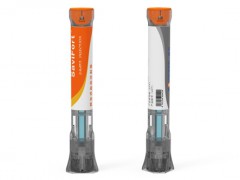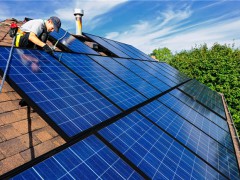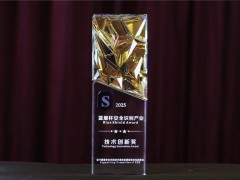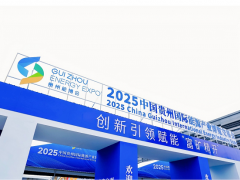據天然氣加工新聞網7月10日報道,根據CEDIGAZ的數據顯示,2022年全球液化天然氣(LNG)貿易量創下歷史新高,平均每天517億立方英尺,較2021年增長5%。液化能力的增加,主要是美國推動了全球液化天然氣貿易的增長。與此同時,歐洲液化天然氣需求的增加也促進了貿易增長,由于液化天然氣繼續取代進口的管道天然氣。
與2021年相比,2022年美國液化天然氣出口量增長16%,從14億立方英尺/天增至102億立方英尺/天,是所有液化天然氣出口國中增幅最大的。2022年上半年,在該國新的Calcasieu Pass液化天然氣出口設施投產后,美國首次成為全球最大的液化天然氣出口國。然而,由于自由港液化天然氣出口終端關閉,美國液化天然氣出口在2022年下半年出現下滑,從而被其他兩國超越。2022年,卡塔爾和澳大利亞仍然是全球前兩大液化天然氣出口國,卡塔爾日均出口量為105億立方英尺,澳大利亞日均出口量為104億立方英尺。
馬來西亞、挪威、特立尼達和多巴哥、俄羅斯與阿曼和赤道幾內亞的液化天然氣總出口量增加130億立方英尺/天。阿爾及利亞和尼日利亞的液化天然氣出口量總共減少50億立方英尺/天,由于這兩個國家的國內天然氣生產仍然存在問題,而天然氣是液化天然氣出口設施的原料。
在液化天然氣進口地區中,歐洲(包括土耳其)的全球液化天然氣進口增幅最大,較2021年增長65%(65億立方英尺/天)。與2021年相比,亞洲的液化天然氣進口量下降了9%(32億立方英尺/天),拉丁美洲下降了34%(8億立方英尺/天)。
2022年,歐盟27國和英國的液化天然氣進口量大幅增加,與2021年相比增長了73%(63億立方英尺/天),取代了管道進口。法國、英國、西班牙、荷蘭和比利時這五個國家的液化天然氣進口量總共增加了54億立方英尺/天,占總增長量的85%。
近50年來,日本一直是最大的液化天然氣進口國。其他亞洲國家,尤其是那些更依賴全球液化天然氣現貨市場的國家,由于去年液化天然氣價格創歷史新高而減少了現貨采購。與2021年相比,2022年印度、巴基斯坦和孟加拉國的液化天然氣進口總量下降了18%(9億立方英尺/天)。
在拉丁美洲,巴西的液化天然氣進口量下降幅度最大,為70%(6億立方英尺/天),這主要是因為與2021年相比,2022年水電可用性更高,減少了對天然氣發電的需求。
郝芬 譯自 天然氣加工新聞網
原文如下:
Global liquefied natural gas trade volumes set a new record in 2022
In 2022, global trade in liquefied natural gas (LNG) set a record high, averaging 51.7 billion cubic feet per day (Bcf/d), a 5% increase compared with 2021, according to data by CEDIGAZ. Liquefaction capacity additions, primarily in the United States, drove growth in global LNG trade. At the same time, increased LNG demand in Europe also contributed to trade growth as LNG continued to displace pipeline natural gas imports.
U.S. LNG exports in 2022 increased by 16% (1.4 Bcf/d) to 10.2 Bcf/d compared with 2021, the largest increase of all LNG-exporting countries. In the first half of 2022, after the new Calcasieu Pass LNG export facility was commissioned, the United States became the world’s top LNG exporter for the first time. However, because the Freeport LNG export terminal shut down, U.S. LNG exports declined in the second half of the year. In 2022, Qatar and Australia remained the top two global LNG exporters; Qatar’s exports averaged 10.5 Bcf/d, and Australia’s exports averaged 10.4 Bcf/d.
LNG exports increased by a combined 1.3 Bcf/d from Malaysia, Norway (after Hammerfest LNG returned to service in May), Trinidad and Tobago,the bigger producer, Oman, and Equatorial Guinea. LNG exports from Algeria and Nigeria decreased by a combined 0.5 Bcf/d as both countries continued to experience issues with domestic natural gas production, which is used as a feedstock at LNG export facilities.
Among LNG-importing regions, Europe (including Türkiye) had the largest increase in LNG imports globally, increasing by 65% (6.5 Bcf/d) compared with 2021. LNG imports declined by 9% (3.2 Bcf/d) in Asia and by 34% (0.8 Bcf/d) in Latin America compared with 2021.
LNG imports into EU-27 countries and the UK increased substantially in 2022—by 73% (6.3 Bcf/d) compared with 2021—replacing imports by pipeline. Five countries—France, the UK, Spain, the Netherlands, and Belgium—increased LNG imports by a combined 5.4 Bcf/d, accounting for 85% of the total increase.
Japan was the top LNG importer for 50 years. Other Asian countries, particularly those that rely more on global LNG spot markets, reduced spot purchases because of record-high LNG prices last year. LNG imports into India, Pakistan, and Bangladesh declined by a combined 18% (0.9 Bcf/d) in 2022 compared with 2021.
In Latin America, Brazil had the largest decrease in LNG imports—70% (0.6 Bcf/d)—mainly because the higher availability of electricity from hydropower generation reduced demand for natural gas-fired electricity generation in 2022 compared with 2021.
免責聲明:本網轉載自其它媒體的文章及圖片,目的在于弘揚石化精神,傳遞更多石化信息,宣傳國家石化產業政策,展示國家石化產業形象,參與國際石化產業輿論競爭,提高國際石化產業話語權,并不代表本網贊同其觀點和對其真實性負責,在此我們謹向原作者和原媒體致以崇高敬意。如果您認為本站文章及圖片侵犯了您的版權,請與我們聯系,我們將第一時間刪除。







